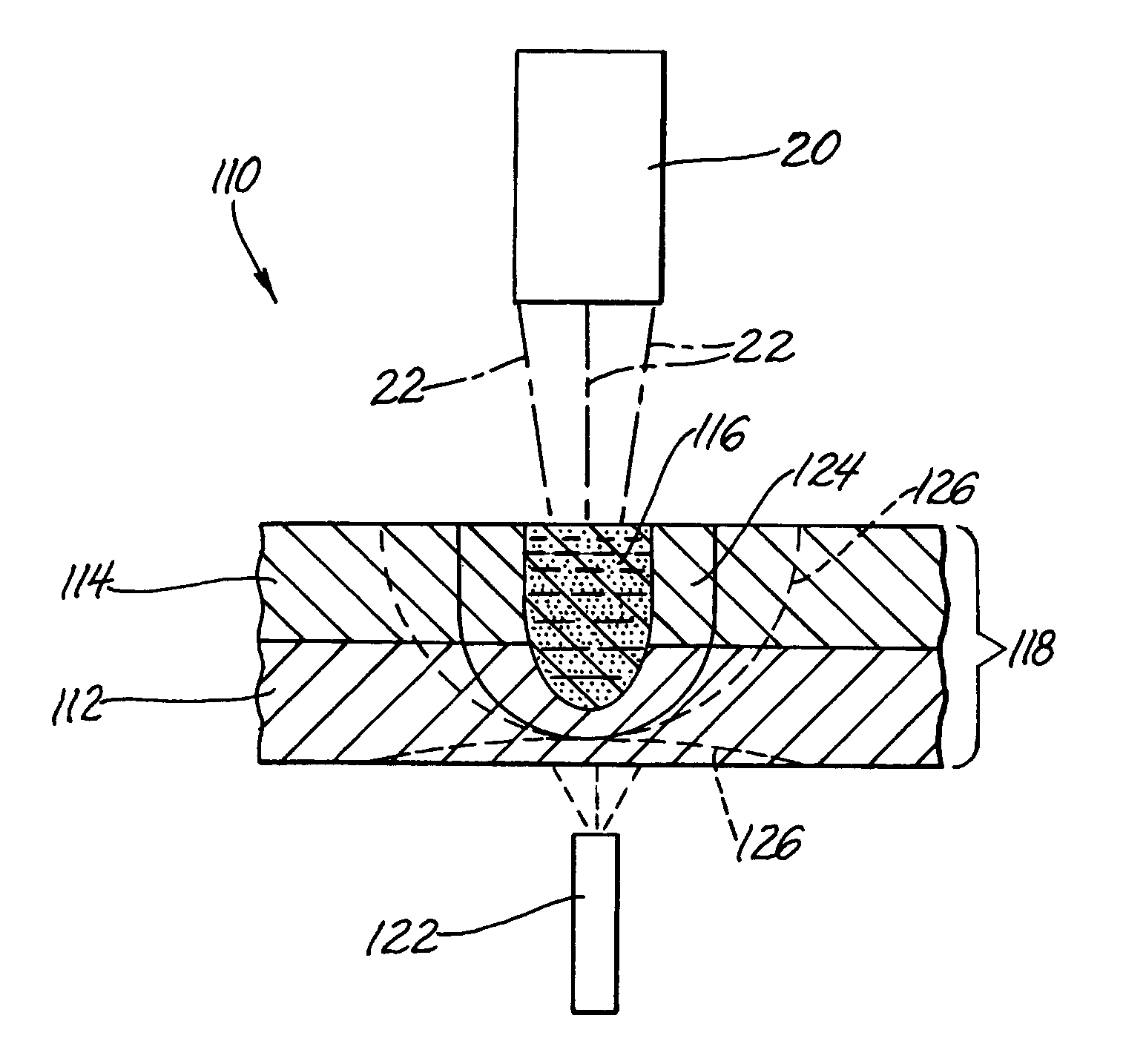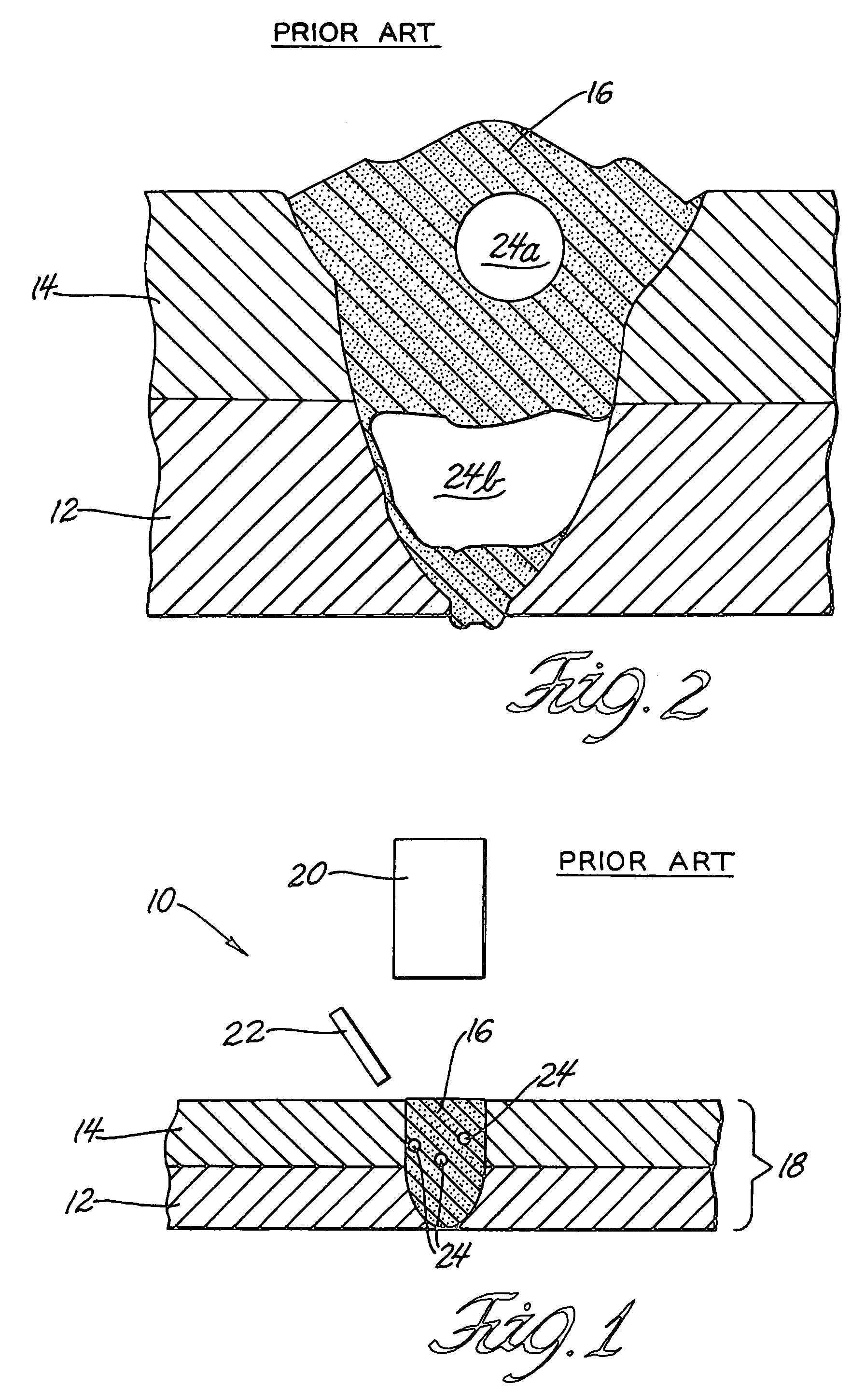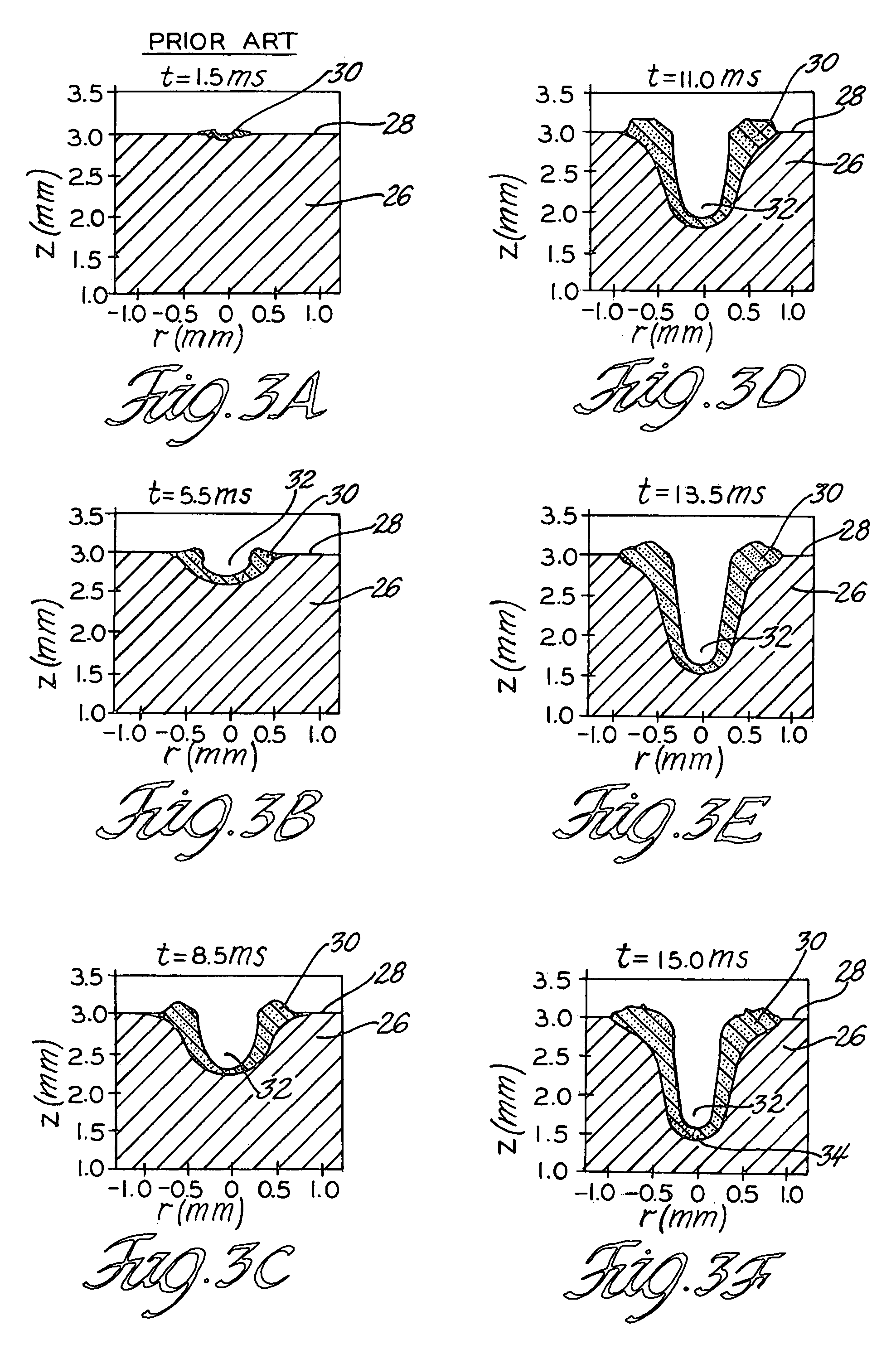Method of improving weld quality
a technology of weld quality and method, applied in the field of welding process, can solve the problems of limited success in joining aluminum or magnesium substrates, aluminum presents several metallurgical difficulties, laser welding suffers from problems with reflective materials, etc., and achieves the effects of slow solidification of the molten weld trough, wide temperature distribution, and reduced porosity
- Summary
- Abstract
- Description
- Claims
- Application Information
AI Technical Summary
Benefits of technology
Problems solved by technology
Method used
Image
Examples
Embodiment Construction
[0018]In general, the present invention provides a method of improving weld quality in laser welding of aluminum or magnesium members wherein a heating means, which is separate from a welding laser, is used to heat the aluminum components so as to slow solidification of a molten weld trough created by the welding laser and thereby reduce porosity within a resultant weld bead. The term member as used herein encompasses components, sheet material, and the like. The present invention may best be understood in contrast to prior art aluminum laser welding processes.
[0019]Referring specifically now to the Figures, there is illustrated in FIG. 1 a laser welding setup 10 according to the prior art. The welding setup includes a lower sheet 12 composed of aluminum, an upper sheet 14 also composed of aluminum, and a weld 16 joining the upper and lower sheets 14, 12. The weld 16 is shown in cross section and may either be a cross section of a linear bead of a weld bead or may be a cross section...
PUM
| Property | Measurement | Unit |
|---|---|---|
| diameter | aaaaa | aaaaa |
| diameter | aaaaa | aaaaa |
| time | aaaaa | aaaaa |
Abstract
Description
Claims
Application Information
 Login to View More
Login to View More - R&D
- Intellectual Property
- Life Sciences
- Materials
- Tech Scout
- Unparalleled Data Quality
- Higher Quality Content
- 60% Fewer Hallucinations
Browse by: Latest US Patents, China's latest patents, Technical Efficacy Thesaurus, Application Domain, Technology Topic, Popular Technical Reports.
© 2025 PatSnap. All rights reserved.Legal|Privacy policy|Modern Slavery Act Transparency Statement|Sitemap|About US| Contact US: help@patsnap.com



